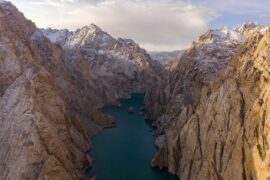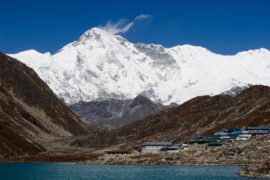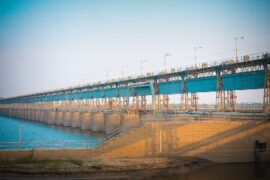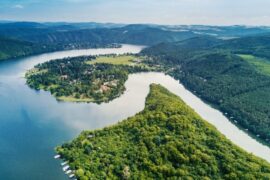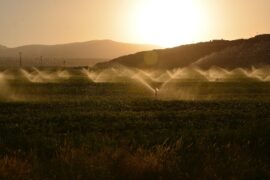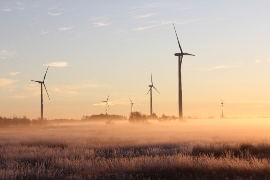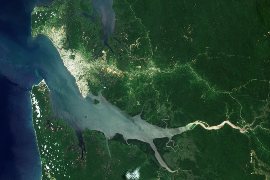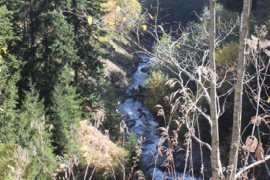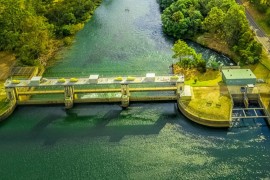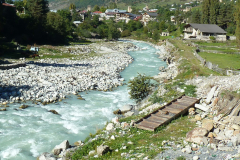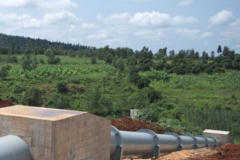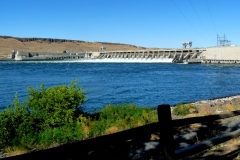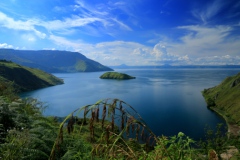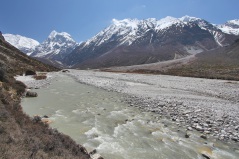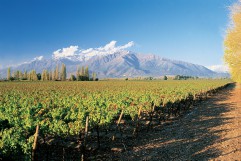Uitdaging
De wereld staat voor een fundamentele uitdaging: voldoen aan de groeiende wereldwijde vraag naar betaalbare elektriciteit voor het ontwikkelen van economieën en het uitbannen van armoede, terwijl de CO2-uitstoot drastisch wordt verminderd en de rivieren, wetlands en bossen van de wereld en de gemeenschappen die daarvan afhankelijk zijn, worden beschermd. De realiteit van klimaatverandering vereist dat de wereld overgaat naar een duurzamere energietoekomst.
Waterkracht is een belangrijke CO2-arme optie, maar het gebruik ervan wordt vaak in verband gebracht met grote sociale en milieueffecten, zoals de verplaatsing van gemeenschappen en het verlies van rivieren en hun diverse ecosystemen. Waterkrachtontwikkeling staat voor de uitdaging om geloofwaardige alternatieven voor te stellen en om de behoefte aan dergelijke stuwdammen te verminderen.
Een stroomgebieds- of systeemschaalbenadering is essentieel voor de ontwikkeling van waterkracht om duurzame resultaten van waterkrachtprojecten over de hele wereld te garanderen. Zowel landschappelijke planning als integratie van milieueisen en ander gebruik, kunnen ecosysteemdiensten ondersteunen en het potentieel bieden voor brede economische voordelen naast energieopwekking. Andere voordelen zijn bijvoorbeeld watervoorziening, overstromingsrisicobeheer, irrigatie en leefgebied voor trekvissen en biodiversiteit. Bovendien biedt deze aanpak een platform om projecten beter te betrekken bij belanghebbenden en andere projecten die in hetzelfde stroomgebied opereren. Om een systeemmatige aanpak te ondersteunen, zijn waterbeschikbaarheidsanalyses nodig, rekening houdend met deze mogelijke voordelen.
FutureWater-aanpak
FutureWater past een moderne toolset, inclusief tools die in eigen beheer worden ontwikkeld, toe op een breed scala aan duurzame waterkrachtprojecten. Afhankelijk van de context en de belangrijkste vragen worden een tool en een of meerdere datasets geselecteerd. Voorbeelden zijn hoge resolutie satellietgegevens voor gletjers in hoge berggebieden en datasets met wereldwijde klimaatgegevens voor hydrologische modellen.
Voor kleine waterkrachtprojecten in hooggebergte-gebieden wordt bijvoorbeeld typisch het glacio-hydrologische model SPHY toegepast om afvoeren en de kans op extreme overstromingen te beoordelen. Hetzelfde model, in combinatie met de output van een ensemble van klimaatmodellen, kan worden gebruikt om klimaatrisico’s en effecten van klimaatverandering te beoordelen, maar ook de mogelijkheden voor het vergroten van de klimaatbestendigheid van een waterkrachtcentrale te analyseren.
FuturWater heeft uitgebreide ervaring met het beoordelen van het potentieel voor duurzame landgebruiksactiviteiten in een stroomgebied, de kosten en baten ervan, de impact op de opwekking van waterkracht en de vraag naar en aanbod van ander gebruik en gebruikers. Om de dialoog met belanghebbenden te ondersteunen en kwantitatief bewijs te leveren over mogelijke succesvolle inkomsten(deling) uit waterkracht, kan een analyse van het rendement op investeringen worden uitgevoerd en gepresenteerd op manieren die voor een breed publiek verteerbaar zijn.
Gerelateerde projecten
-
Climate Risk Assessment: Golovnaya Hydropower Plant, Tajikistan
The Asian Development Bank (ADB) is supporting the rehabilitation of the 240-MW Golovnaya Hydropower Plant in Tajikistan, aiming to increase renewable energy supply from 743 GWh to 1,130 GWh. The project includes refurbishing the generation units. FutureWater supported ADB by assessing the climate risk and adaptation options for this investment...
-
WE-ACT: Water Efficient Allocation in a Central Asian Transboundary River Basin
The WE-ACT project’s overall goal is to demonstrate a Decision Support System (DSS) for water allocation in a Central Asian transboundary river to increase shared benefits and foster the adaptation of water resources management and planning to climate change.
-
Climate Risk and Adaptation Assessment for Hydropower Project in Nepal
Climate risk and adaptation (CRA) assessment is required for the 635 MW Dudhkoshi hydroelectric project (DKSHEP) to ensure the project addresses climate change mitigation and adaptation in accordance with ADB’s requirements. The initial Climate Risk Assessment (CRA) by FutureWater in 2021 suggested the project is likely to be affected by...
-
Hydrological Assessment for the Lunyangwa Dam
The Lunyangwa Dam is prone to overtopping during the wet season. Raising the spillway crest and/or installing gates on the existing crest will allow an increase in the retention level. In order to determine the height of the redesigned spillway, a flood analysis was conducted for several return periods in...
-
SOS-Water: Water Resources System Safe Operating Space in a Changing Climate and Society
The SOS-Water Project endeavours to set out the boundaries within which the Earth’s capacity to provide life-support systems for humanity is not endangered, and humanity’s capacity to adapt to environmental changes is not overburdened. Crossing such thresholds or tipping points in the complex Earth system could result in abrupt and...
-
Follow the Water: Reuse of Water in Irrigated Systems
Reuse of water in irrigated systems is a key component in design and management of irrigation systems. FAO and FutureWater developed a Guidance document, a Tool and a Training package demand for a better understanding of the role of reuse of water in irrigated agriculture systems. Those outcomes will support...
-
Climate Risk and Adaptation Assessment for Nepal’s Power Sector
Nepal’s power sector predominantly relies on hydropower generation. Hydropower is vulnerable to climate change and natural disasters caused by climate change. An understanding of the future impact of climate change on hydropower assets and their performance is important for the successful implementation of hydropower projects. Climate risk and adaptation (CRA)...
-
Renewable Energy for Climate Resilience in Bhutan
The goal of the Asian Development Bank project ‘Renewable Energy for Climate Resilience’ in Bhutan is to diversify Bhutan’s energy portfolio. The rationale for diversification is related to the expectation that climate change impacts on the cryosphere and hydrology in Bhutan will lead to less reliable flows, in particular outside...
-
Improved Watershed and Forestry Activities to Secure Hydropower
This study supports Gabon in preserving Hydrologic Ecosystem Services in a river basin which faces challenges due to planned hydropower and forestry operations. It will evaluate various watershed management scenarios which may improve hydrological flow conditions and hydropower options. FutureWater analyzes hydrological ecosystem services provision in the Komo basin through...
-
Hydrological Assessment for Hydropower in the Lukhra River
The objective was to develop a hydrological assessment for a planned run-of-river hydropower plant in the Lukhra river basin in Georgia. There is no observed river discharge data available. Hence, the assessment was developed based on hydrological simulations of the basin using the SPHY model (Terink et al., 2015) and...
-
eLearning on Hydrology and Climate Change for Hydropower Professionals
Hydropower production in Indonesia is the main renewable energy source in the country. There is a potential to double the capacity by building new hydropower plants and to optimize current plants. PLN is the main hydropower company in the country. The project aims at enhancing the capacity of its staff...
-
Feasibility Study for the Development of a ‘Small-hydro Climate Risk Assessment Tool’
Small hydropower (1 - 20 MW) does not require a Climate Risk Assessments yet, but this will eventually happen in the future. Investors are highly interested in the profitability of these small hydropower stations, especially because of the uncertainty caused by future climate change. Current methods for Climate Risk Assessments...
-
Glacio-hydrological Assessment for Hydropower in the Nakhra River
The objective was to develop a glacio-hydrological assessment for planned run-of-river hydropower plant locations in the Nakhraa river basin in Georgia. The availability of observed river flow data is limited. Hence the assessment was developed based on hydrological simulations of the basin using the SPHY model (Terink et al., 2015)....
-
Glacio-hydrological assessment for hydropower, Mestiachala river, Georgia
The objective of this project was to develop a hydrological assessment for two potential hydropower plant locations in the Mestiachala basin in Georgia. The availability of observed river discharge data is limited. Hence the assessment was developed based on hydrological simulations of the basin using the SPHY model (Terink et...
-
Improved catchment management for small hydropower
This study assessed the impacts of various investment portfolios for catchment management activities on the cost-benefits of small hydropower schemes, in two case study catchments in Kenya and Tanzania, and analyzes the return-on-investment for the hydropower developers. Catchment degradation trends, climate change impacts and socio-economic changes increasing competing water use...
-
Climate Risk Assessment Using the Decision Tree Framework
The novel methodology that is piloted by the World Bank for assessing climate risks versus other risks on water resource projects, called the Decision Tree Framework (DTF), is applied to two two planned investments: (1) flood protection infrastructure and irrigated cropland expansion on the Nzoia river, Kenya; and (2) the...
-
Hydrological assessment for two potential sites for run-of-river hydropower, southwestern Georgia
A hydrological assessment was carried out for two sites where run-of-river hydropower plants are planned, in the southwestern part of Georgia. Only very limited streamflow data were available, so the assessment was based mainly on hydrological modelling of the basin upstream of the points of interest. Principally global datasets were...
-
Hydrological pre-feasibility assessment for a potential hydropower plant, North Sumatra, Indonesia
Following the successful development of hydropower facilities in Indonesia, a new project was established to study the potentials for the development of a hydro-electric power plant in the Tripa Basin, North Sumatra, Indonesia. To make a go/no-go decision of a more detailed feasibility study, a pre-feasibility study is undertaken to...
-
Hydropower Development Assessment for the Tamakoshi River Basin
The overall objective of this project is to improve the understanding of the expected impacts of climate change on water availability in the context of potential hydropower development in the Tamakoshi River Basin. Specifically, the project aims to (i) Understand the current baseline hydrological regime of the Tamakoshi River Basin,...
-
Review Climate Change Hindu-Kush-Himalaya
FutureWater provided a comprehensive review study on climate change and the impacts on cryosphere, hydrological regimes and glacier lakes in the Indus, Ganges, and Brahmaputra river basins. This review study was done in the context of future hydropower development in the region.
-
Central Asia Regional Risk Assessment for Water Related Energy Sector Impacts
The objective of this study was to support the “Central Asia Regional Energy Sector Vulnerability Study” led by Industrial Economics (IEc) and funded by the World Bank, by carrying out an expanded risk assessment for water availability and water related energy sector impacts in Central Asia. The work built on...
-
INTOGENER: Integration of EO data and GNSS-R signals for ENERgy applications
The need for accurate short and mid-term forecasting of the water flow generated from snowmelt in mountain basins is an important component for water management and hydropower activities. Due to the remoteness and difficult access to basins especially in cold weather conditions, where in-situ snow measurements, water level monitoring and...


